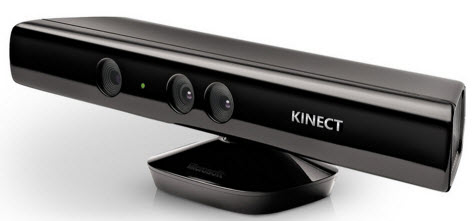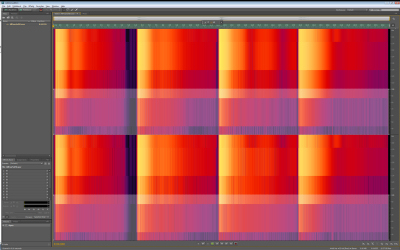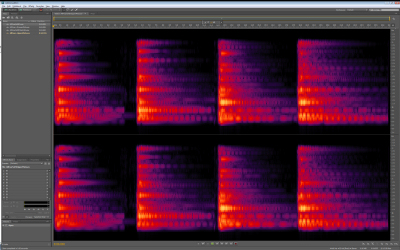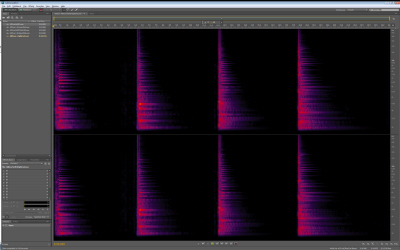The Kinect For Windows SDK v1.0 is awesome, but it doesn't recover well when it loses sight of you whilst tracking your skeleton. With a timer control and a little code to restart the KinectSensor, you can recover is 5 seconds or less.
You don't need any controls for this demo. It simply turns the form red when tracking, and white when not tracking.
The basic idea is that when we lose tracking for the first time, you kick off a timer to fire it's Tick event in 1/2 a second. In the timer Tick handler you stop the Kinect Sensor, Start it up again, and then set the timer's Interval to a more reasonable amount of time. I use 5 seconds, but you should test it in your app. If it's too short, you don't give the Kinect time to track you, and if it's too long and it doesn''t track you, you could be sitting and waiting too long. 5 seconds seems reasonable to me.
When the state changes from not tracking to tracking, you simply disable the timer.
Here's the code in both C# and VB.NET. In each case you can replace the default code behind MainWindow.xaml and run it. The C# app has to have a reference to System.Windows.Forms
using System;
using System.Collections;
using System.Collections.Generic;
using System.Data;
using System.Diagnostics;
using System.Windows.Forms;
using System.Windows.Media;
using Microsoft.Kinect;
namespace TrackingTestCSharp
{
/// <summary>
/// This WPF demo shows you how gracefull recovery when the Kinect loses
/// skeletal tracking. The Kinect device does not recover well on it's own.
/// While restarting the Kinect may seem drastic, it's the only way I can
/// figure out how to do it. If you find a better way, email me at
/// carl@franklins.net. Thanks!
/// </summary>
/// <remarks></remarks>
partial class MainWindow
{
private KinectSensor sensor;
//-- boolean to keep track of the state
private bool isTracking;
//-- This is the interval after which the kinect is restarted the second
// and subsequent times.
private TimeSpan autoTrackingRecoveryInterval = TimeSpan.FromSeconds(5);
//-- Timer used to restart
private System.Windows.Threading.DispatcherTimer trackingRecoveryTimer =
new System.Windows.Threading.DispatcherTimer();
public MainWindow()
{
Loaded += MainWindow_Loaded;
}
private void MainWindow_Loaded(object sender, System.Windows.RoutedEventArgs e)
{
//-- Make sure we have a sensor connected
if (KinectSensor.KinectSensors.Count == 0) {
MessageBox.Show("No Kinect Found");
System.Windows.Application.Current.Shutdown();
}
//-- Start the first sensor, enabling the skeleton
sensor = KinectSensor.KinectSensors[0];
sensor.SkeletonStream.Enable(new TransformSmoothParameters());
sensor.Start();
//-- Hook the events
sensor.SkeletonFrameReady += sensor_SkeletonFrameReady;
trackingRecoveryTimer.Tick += trackingRecoveryTimer_Tick;
}
private void sensor_SkeletonFrameReady(object sender, Microsoft.Kinect.SkeletonFrameReadyEventArgs e)
{
//-- Get the frame
dynamic frame = e.OpenSkeletonFrame();
//-- Bail if it's nothing
if (frame == null) return;
using (frame) {
//-- Bail if no data is returned.
if (frame.SkeletonArrayLength == 0) return;
//-- Get the data from the frame into an array
Skeleton[] data = new Skeleton[frame.SkeletonArrayLength];
frame.CopySkeletonDataTo(data);
//-- Is there really no data?
if (data.Length == 0) return
//-- Is this skeleton being tracked?
if (data[0].TrackingState == SkeletonTrackingState.Tracked) {
if (!isTracking) {
//-- If we weren't tracking, set the background to red
// to indicate that we are tracking
this.Background = Brushes.Red;
//-- we're tracking
isTracking = true;
//-- disable the timer
trackingRecoveryTimer.IsEnabled = false;
}
} else {
if (isTracking) {
//-- State changed from tracking to not tracking
isTracking = false;
//-- Set the background white to indicated we're NOT tracking
this.Background = Brushes.White;
//-- Since this is the first time we've lost tracking,
// restart after 1/2 a second
trackingRecoveryTimer.Interval = TimeSpan.FromSeconds(0.5);
trackingRecoveryTimer.IsEnabled = true;
}
}
}
}
private void trackingRecoveryTimer_Tick(object sender, System.EventArgs e)
{
//-- Disable the timer
trackingRecoveryTimer.IsEnabled = false;
//-- If we're already tracking, bail.
if (isTracking) return;
//-- Stop the sensor, ignoring errors
try {
sensor.Stop();
} catch {
}
//-- Start the sensor, ignoring errors
try {
sensor.Start();
} catch {
}
//-- Come back here in the defined interval
trackingRecoveryTimer.Interval = autoTrackingRecoveryInterval;
trackingRecoveryTimer.IsEnabled = true;
}
}
}
 Carl Franklin | Posted on
Carl Franklin | Posted on  Saturday, September 29, 2012 at 02:07PM
Saturday, September 29, 2012 at 02:07PM 







